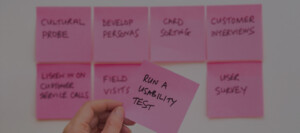
Website Project Timelines for Surrey Businesses
Table of Contents
TLDR
Most web design projects for Surrey businesses take between 6 and 10 weeks from discovery to launch.
A basic one-page site can go live in as little as 1–2 weeks.
A standard small business site typically takes 4–6 weeks.
An e-commerce site with 20–50 products usually needs 8–12 weeks.
Custom platforms or apps often require 12+ weeks, phased over time.
You’ll move faster if:
- Your content is ready early
- One person is in charge of sign-off
- You stick to the original scope
Delays usually come from content bottlenecks, indecision, or mid-project feature creep.
• • •
• • •
How long does a website take to build?

It’s the first question most Surrey businesses ask after getting a quote:
“OK, but how long will it actually take?”
And the honest answer is: It depends. But not as much as some agencies make it sound. If you’re clear on what you need, move fast on approvals, and don’t try to reinvent the wheel mid way, most custom website without a lot of functionality can go live in 8 weeks, sometimes faster.
At Ronins, our recent projects for Surrey based clients have averaged between 6 and 10 weeks, depending on scope and how ready the client was with content. E-commerce builds take a little longer, simple brochure sites a little less.
But here’s the catch: “build time” isn’t just how long your developer takes.
It’s how long it takes you and your agency together to get from idea to launch. And that includes discovery, design sign-offs, content population, and testing.
So in this article, we’re breaking it down:
- What a typical 8 week project looks like (with real examples)
- Where things slow down (and how to avoid it)
- How long to expect if you’re building a shop, service site, or something more custom
- And how Surrey businesses are speeding up projects by prepping smarter
• • •
What local businesses should expect

Website timelines don’t just depend on what you’re building, they depend on who you’re building it with and where.
We looked at 10 recent projects we’ve delivered. Here’s the pattern:
The most common phrase people use to find us is “web design Surrey,” which reflects what most local businesses are actually searching when they’re ready to start a new project.
- Simple service websites (5–8 pages, brochure-style): 4–6 weeks
- Mid-weight builds (e.g. firms with multiple service lines, blog, team pages): 6–8 weeks
- E-commerce sites (with 20–50 products, Shopify or WooCommerce): 8–12 weeks
- Bespoke website builds or platforms (e.g. booking systems, web apps): 12+ weeks
Local advantage: faster feedback, tighter turnaround
Face-to-face kickoffs, in-person workshops, quick WhatsApp sign-offs. These shave days or even weeks off the process compared to fully remote builds.
One Guildford-based client cut their project time in half by:
- Being available for a live in person discovery session
- Signing off designs in 24 hours
- Supplying content in full by Week 3
Their entire site went from kickoff to launch in under 6 weeks.
Snapshot Table: Recent Surrey Project Timelines
| Project Type | Client Role | Timeline |
|---|---|---|
| High Street Store | Signed off in 1 round, supplied all content | 4 weeks |
| Sixth From College | Multiple stakeholders, minor delays | 12 weeks |
| Art gallery | Provided assets up-front | 4 weeks |
| Bespoke SaaS | Phased MVP, agile build | 24 weeks |
| Shopify Store Clothing | 50 products, light customisation | 6 weeks |
| Shopify Store Equipment | 50 products, light customisation | 6 weeks |
| Sustainable Energy Site | Multiple stakeholders, minor delays | 8 weeks |
| Shopify Store Water Bottles | Provided assets up-front | 6 weeks |
| IT company | Content provided early | 5 weeks |
| Charity Website | Multiple stakeholders, minor delays | 12 weeks |
Takeaway: Timeline isn’t just about what you’re building, it’s how prepared you are to build it.
• • •
The 4 Core Phases (and What Eats the Most Time)

Every website project moves through the same four stages. Whether you’re a solo consultant or launching an e-commerce brand in Guildford, the shape stays the same , but the friction points change.
We’ve broken down each phase, who owns it, how long it typically takes, and what tends to delay it. Knowing where timelines slip is the first step to avoiding it.
Phase 1: Discovery & Planning
Owner: Shared
Typical Duration: 1 week
Biggest Risk: Starting before the brief is nailed.
This is where we align on goals, users, pages, structure, and features. For Surrey builds, we often run this face-to-face, or via a fast-paced workshop on Zoom. Done well, it sets the tone for everything.
Why it matters: Rushing discovery creates problems downstream, vague goals, scope creep, unclear roles. Every “just a quick change” later? It usually starts here.
How to keep it tight:
- Come in with clarity, who your audience is, what your business does, what success looks like.
- Agree the sitemap early.
- Use decision, makers only, not a committee.
Phase 2: Website Design Process
Owner: Agency (with client feedback)
Typical Duration: 2 weeks
Biggest Risk: Endless feedback loops.
We translate goals into visuals, wireframes, then full designs. This is where clients get excited (and sometimes indecisive). The faster you respond with clear, consolidated feedback, the faster we move.
Design time is rarely the bottleneck, sign-off is.
How to keep it tight:
- Stick to max 2 rounds of revisions.
- Give specific feedback: “Make the CTA bigger” beats “I don’t love it.”
- Appoint one person to sign off, not your whole board.
Phase 3: Development & Content Population
Owner: Agency + Client
Typical Duration: 4 weeks
Biggest Risk: Content delays.
This is the heavy lifting , building the site, setting up CMS, making it fast, responsive, and accessible. But the biggest blocker isn’t code, it’s content. If your copy and images aren’t ready, we can’t launch.
Most 4-week builds become 10-week builds here.
How to keep it tight:
- Write content in parallel, don’t wait until design is signed off.
- Or better, hire us to write it.
- Use templates and AI to draft faster (we’ll refine it).
Phase 4: Testing & Launch
Owner: Agency
Typical Duration: 1 week
Biggest Risk: Rushing the final mile.
This phase covers QA, mobile and browser checks, performance optimisation, search engine optimisation polish, and final tweaks. If you’ve planned well, this is smooth. If you haven’t, this is where bugs bite back.
It’s not just about making it live, it’s about making it work.
How to keep it tight:
- Let us handle UAT with clear sign-off checklists.
- Don’t sneak in last-minute changes, fix them in Phase 2 or schedule them post-launch.
- Stick to the go-live date. If we hit the finish line, don’t stall.
Bonus Phase: Post-Launch Enhancements
Not part of the core build, but should be scoped early. SEO, CRO, integrations, phase-2 features, these are sprints, not delays.
Summary:
Design rarely kills timelines. Development is steady. Content and sign-off delays are where most projects stall.
Control those, and you’ll launch on time.
• • •
Common Timeline Killers (and How to Avoid Them)

Here’s the truth: most delays aren’t technical. They’re human.
And in Surrey, where many of our clients are balancing a site build with running a growing business, the same traps come up again and again. The good news? They’re avoidable, if you know where to look.
1. Content delays
The #1 killer. We can’t build a homepage without words. And we can’t populate your CMS if we’re waiting on product info, team bios, or service blurbs.
“We’ll sort the content later” = weeks lost.
Fix it:
- Start writing during the design phase.
- Use AI drafts + editor, or let your agency ghostwrite it.
- Set a content deadline like you would any sprint.
2. Feedback bottlenecks
Design’s done. The build’s ready. But everything stalls waiting for approval, especially when multiple stakeholders are involved.
Symptoms:
- “Let me just show it to the wider team…”
- “Our CEO’s on holiday until next Thursday…”
Fix it:
- Appoint one point of contact with sign-off power.
- Limit feedback rounds, max two per phase.
- Keep momentum by scheduling feedback slots up front.
3. Scope creep
Starts with “Can we just add…” and ends with a launch date that’s slipped by a month.
Scope creep happens when new features, extra pages, or unplanned integrations are added mid-way, without adjusting time or budget.
Fix it:
- Agree a fixed scope during discovery.
- If new ideas come up, park them for Phase 2 post-launch.
- Use a MoSCoW matrix (Must, Should, Could, Won’t) to prioritise.
4. Design by committee
Too many opinions. No clear direction. Creative rounds spiral.
You lose time, and energy, trying to make everyone happy.
Fix it:
- Define brand guardrails early (fonts, tone, colours).
- Nominate 1–2 key stakeholders for feedback.
- Use a feedback doc to consolidate input, not scatter it across emails.
5. Testing limbo
Final tweaks stretch into weeks. Everyone’s nervous about launching, or someone wants “just one more round of polish.”
Fix it:
- Run a structured UAT checklist.
- Agree a go-live date early, and stick to it.
- Save perfection for post-launch iteration.
Honourable mentions
- Waiting on logo files
- Hiring a photographer too late
- Forgetting about cookie banners / GDPR
- Getting cold feet the week before launch
Your edge is preparation.
The more you front-load the project (content, approvals, scope), the faster, and smoother, you’ll go live.
• • •
Case Study: E‑commerce Build for a Clothing Retailer

In early 2024, a local clothing retailer approached us to take their business online. They had 50+ products, a loyal local customer base, and zero digital presence. Their brief was clear:
“We need to start selling online before summer, and we don’t want to cut corners.” …. but we do
Scope
- Full e-commerce build (Shopify)
- 50 products with variants
- Click & collect setup for local orders
- Secure Payment Gateway integration (Stripe)
- SEO foundations
- Mobile-first design with a seasonal campaign builder
Timeline Breakdown
| Phase | Duration | Notes |
|---|---|---|
| Discovery & Planning | 1 week | Product categories, target personas, SEO |
| Design & UX | 2 weeks | Wireframes → mobile-first visuals |
| Development & Build | 4 weeks | Shopify theme customisation |
| Content & Products | 4.5 weeks | Product data & images handled by client |
| Testing & Launch | 1 week | Payments, shipping, accessibility |
| Total Time | ~12 weeks |
What Went Right
- The client used our product import template, saving days of manual setup.
- Weekly check-ins kept everyone accountable.
- We handled redirects for organic traffic and SEO migration from their current site.
What Slowed Things Down
- Their product photos weren’t ready. We lost a week waiting on for the photographer.
- Last minute content changes as the wider feedback cycle kicked in
Results
- First sale within 72 hours of launch.
- Within 4 weeks, they had processed 1,5000+ orders
- Average page load speed: 1.2 seconds (mobile), improving bounce rate by 18%.
“I was nervous about going online it was our first B2C offering as we are a B2B business traditionally, but this felt controlled the whole way through. You kept us on track, and we’re now shipping across the UK. It’s changed how the wider business looks at its business.”
• • •
How to Keep Your Project on Track
Timelines slip when you leave things loose. Want your website live in 8 weeks? Treat it like a real project, not a side task. That means clarity, momentum, and decision making discipline.
Here’s how Surrey businesses we work with launch on time, without stress:
Set a Go-Live Date (and protect it)
Deadlines create momentum. When everyone knows the launch date, they work backwards from it.
- Build it into your marketing plan.
- Announce it to your team or clients.
- Add buffer, but don’t let it drift.
Appoint a Project Lead on Your Side
This person approves copy, gives feedback on designs, and unblocks decisions. Without one, timelines get stuck in limbo.
Ideally: someone decisive, available, and close to the business.
Sort Your Content Early
If we’re writing it for you, great, we’ll start in parallel with design.
If not, aim to deliver final content by Week 3.
- Use a Google Doc per page.
- No lorem ipsum, placeholder copy delays decisions.
- If in doubt, write it rough, we’ll help edit.
Use Tools, Not Threads
Slack threads, email chains, endless PDFs, they kill clarity.
We use JIRA, Figma, and Google Drive so everything stays in one place. You get version history, faster feedback, and fewer “where’s that file?” moments.
Phase Big Ideas, Don’t Let Them Stall Launch
If you want extra features, great, let’s plan for them. But don’t hold up your go-live for something that can come in Phase 2.
- Example: Launch now with booking form. Add calendar sync next sprint.
- Your site is a living product, it doesn’t need to be perfect to be profitable.
On-time launches aren’t about rushing.
They’re about clarity, commitment, and knowing what not to do mid-project.
• • •
Web Design Project Timeline FAQs

We get these questions in nearly every discovery call. Here are the honest, unfluffed answers, so you know exactly what to expect.
Can we fast-track the build if we supply all the content up front?
Yes — massively.
If you deliver page copy, images, product info, and sign-off decisions early, you can shave 2–3 weeks off the build.
We’ve launched a WordPress website in under 5 weeks this way, but only when the client is highly organised, decisive, and responsive.
What if I don’t have content ready?
You’re not alone, most delays come from missing content.
You’ve got three options:
- Write it yourself, using our content templates and structure.
- Work with our team , we write, you review.
- Use AI drafts, then have us edit and polish for clarity, tone, and SEO.
Either way, don’t wait. Content should start in Week 1.
Can we phase the launch?
Absolutely, and often, you should.
For example:
- Phase 1: Launch with core service pages + contact
- Phase 2: Add case studies, blogs, booking systems
- Phase 3: Integrate CRM, SEO sprints, lead magnets
Going live earlier = faster feedback, faster ROI.
How does SEO fit into the timeline?
We bake it in.
- During discovery: Keyword research and competitor mapping
- During build: Technical SEO (speed, structure, schema)
- Post-launch: Optional SEO sprints (content, links, authority)
If you’re switching domains or rebuilding an old site, we also handle 301 redirects so your rankings don’t tank.
Do we need a local agency?
Not strictly, but local often equals faster.
- Know the local market and search terms
- Can meet in person or run quick Zoom sessions
- Work in the same timezone (and pace)
- Understand your regional audience
If you want speed, clarity, and accountability, local helps.
What slows most Surrey projects down?
In our experience:
- Content not being ready
- Slow sign-off (too many decision-makers)
- Trying to cram in last-minute features
If you avoid those, you’ll launch on time, or ahead.
• • •
Launch Isn’t the Finish Line

A website isn’t finished when it goes live. It’s just ready to start working.
You’ve scoped it, built it, refined it, now it needs to earn its place in your business. That means:
- Getting found (SEO)
- Generating leads (CRO)
- Making sales (UX + speed)
- Evolving over time (phased improvements)
At Ronins, we don’t vanish after go-live. We help Surrey businesses grow into their sites, not just launch them.
Whether you’re planning a fast brochure build, an e-commerce site, or a phased digital platform, here’s what matters most:
The clients who launch on time are the ones who:
- Set clear goals
- Make quick decisions
- Stay focused on essentials
- Trust the process
If that sounds like how you want to work, or you’ve just priced up a site and now want to talk timing, let’s have a proper conversation.
If you’re looking for expert web design Surrey web design Surrey with a clear process and reliable timelines, let’s talks a personal touch and provides real-world examples of how the tool has been beneficial, which can be persuasive for potential customers.





